Will’s been in touch with his weathering gondola ‘how to’:
“For my first attempt at weathering a rail car i chose an inexpensive bachman gondola.
The nicks on the side and gouges in the bottom were done with a file.
Next i heated the sides with a lighter and pushed them in or out.
The weathering was dry brushed with acrylic paint, i chose burnt amber for the paint color to resemble a rust type color.
The scrap wood is a tooth pick cut up and painted and the dirt is frack sand. I then sealed the car with Dulcote.
The sand is a little big so next time i will use a finer grade.
The effect i was going for was to have a car that was very used and abused and i think it turned out o.k.
At least my girlfriend thinks so also !!
Will send further attempts as we progress.
Plan on modeling a west texas oilfield area where i live and work.
best Will…”
A big thanks to Rooster, it reminded me of these:
HO scale single hopper coal gondola
Making loads for HO gondolasMaking loads for HO gondolas.
Making HO scale gondola loads.
Now on to Mark:
“Hi Al.
Here is a fun photo, titled “Late evening after a horrendous thunderstorm”.
The tip here is for those that use their iPhone for layout photos.
Turn the iPhone upside-down so that the lens is right down on the ground level of the layout. Focus on the subject.
The foreground will be blurry but you can crop it out or, in this case, with the night shot it doesn’t really show up. Gives a good perspective!
Mark”
“Mr. Lee Alastair,
I have been in RR employ over 46yrs retired in May 2000. Now am 78yrs old, Also a model railroader since teenage years. Settling in HO scale.
In 1970 I designed the HO layout of the Walnut Creek Model RR Society in Walnut Creek, CA 2751 Buena Vista (in Larky Park) my pet peeve was lack of bright headlights on engines. Some members engines still don’t have headlights and some that barely can be seen at all. Factory headlights mostly are still not scale proficient in brightness.
I have perfected that by installing bright White LEDS in the unit shell complete with 1000ohm resister to power the LEDS. I apply brass contact plates to the inside of the locomotive shell on both sides. All the light wiring is in the shell.
On the power chassis I install power connector plates on each side of the motor to match the contact plates in the shell. Note: all these have to be custom made for the type unit you are lighting. I have five sets of F7’s ABBA’s of which four sets are of Ahearn super power mechanisms and 1 set F3 ABBA Stewarts. And all now have full bright headlights even at minimum voltage.
I also provided a Red LED for reverse movements on all the cab units. I have also lighted other members locomotives this way.
I also have replaced the incandescent lighting in KATO’s business cars to twin bright white 1.8MM LED’s each directly below the red & green plastic light receiving end on underside of car top plastic panel. N9ow there is a bright red rear light plus the green and red side markers. Red to rear and green forward. Another club member had 5 of these business cars that I lighted for him also.
Sincerely on track.
Robert”
Now on to Bobby:
“My name is Bobby and wanted to share my first scratch built bridges. Two are Howe through truss bridges. I have always been interested in scratch building so I gave it a shot. They are almost done so let me know what you think. Thanks.
Bobby”
(When it comes to trestle bridges, I always think of Dan’s post: HO scale trestle template.
Next up, Paul:
“These photos show hornby locomotives with crew figures in the cabs.
The 1st photo is the hornby pug, it has a crew of one.
The others are of a 101 clas tank, and a jinty.
The crew figures were supplied unpainted black.
I painted the figures using water colour paint. I used water colour because if you make a mistake it is easy to fix up the mistake.
Paul”
“Use thrown-away charcoal filter elements (like body shop respirators use) stripped open for REAL looking coal in coal hoppers.
It is light weight, and an exact match for coal. It is a might large for N scale. but looks great for HO and larger scales.
Gregg”
“Ground charcoal makes great scale coal…………keep breaking it till it’s the right size….then use the dust mixed with white sprit to age the rolling stock..
Dry cleaning hangers(plain) can be cut to make telegraph polls (solder cross bars) fence posts etc.
Eric”
That’s all this time folks. Thanks to Robert, Mark and to ‘Roadrooster’ for his weathering gondola ‘how to’.
Please do keep ’em coming.
And if you want to roll your sleeves up and get back in to this fine, fun hobby, the Beginner’s Guide is here.
Best
Al
And there’s the Silly Discount bundle too.



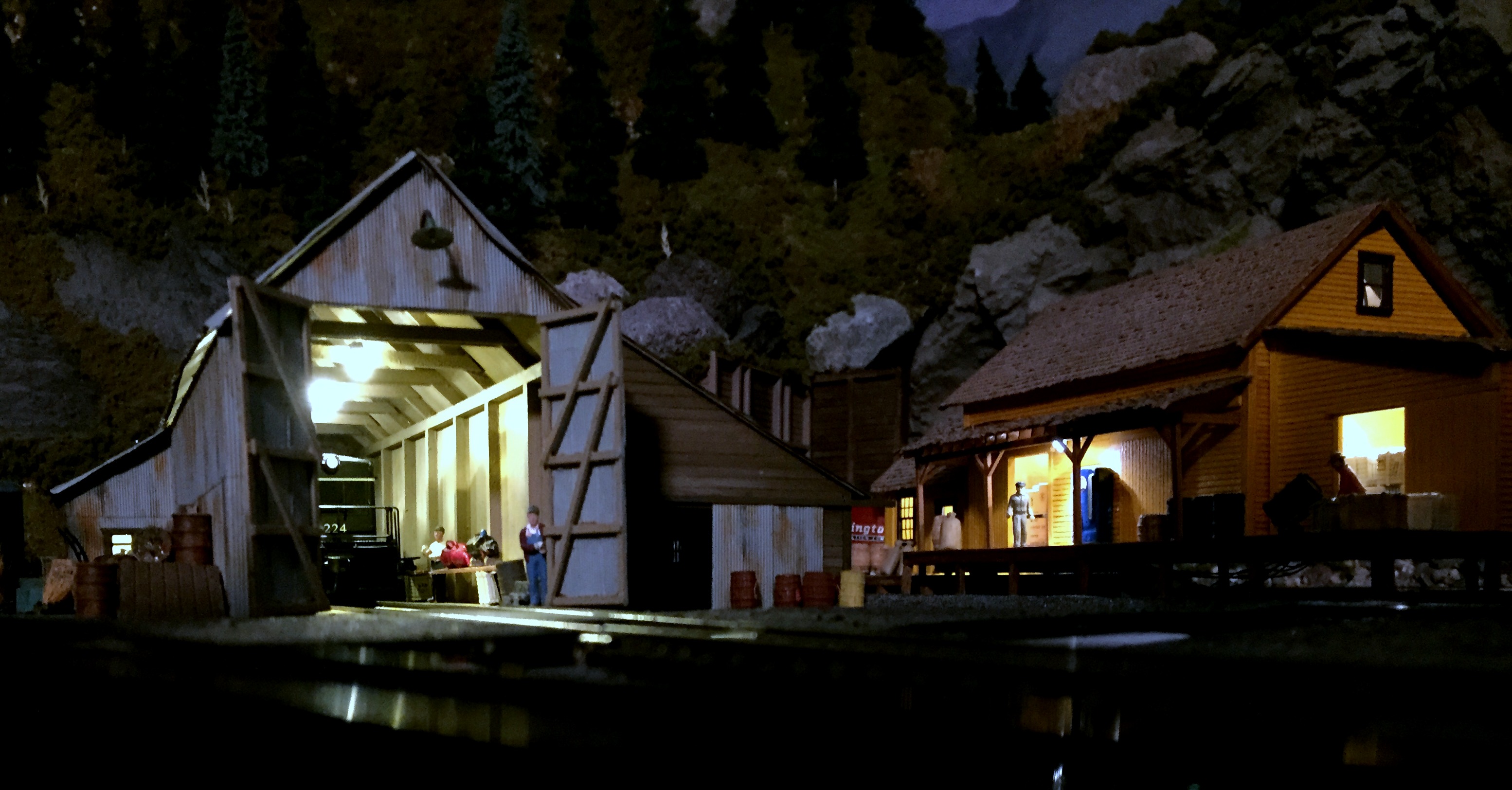
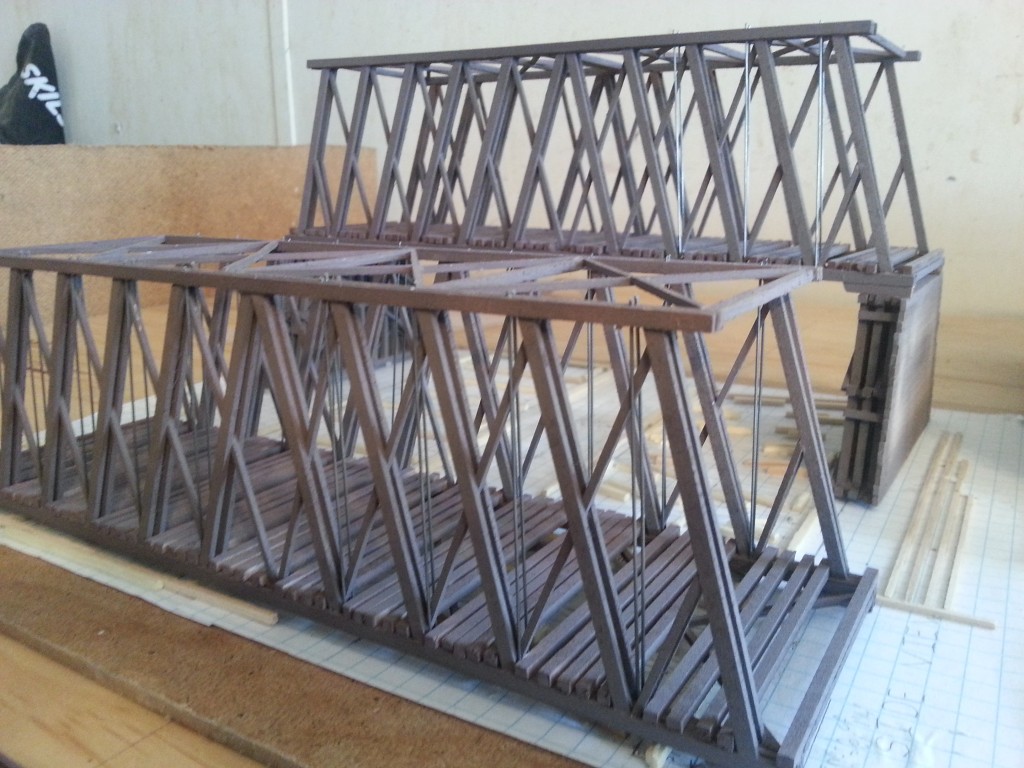
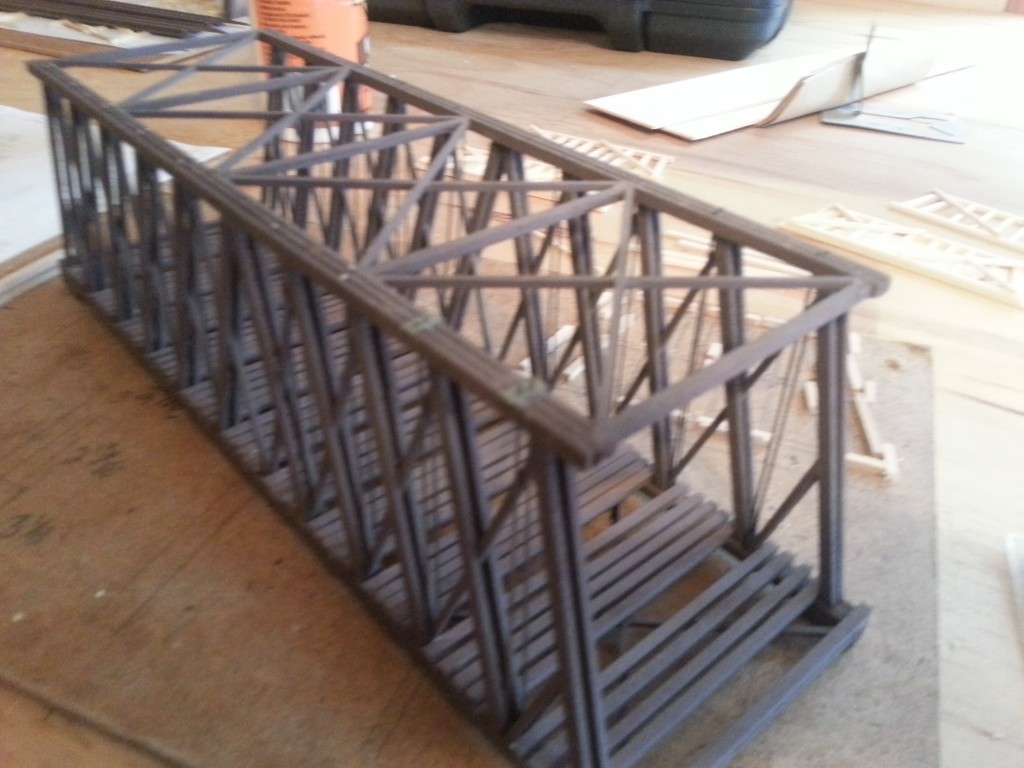
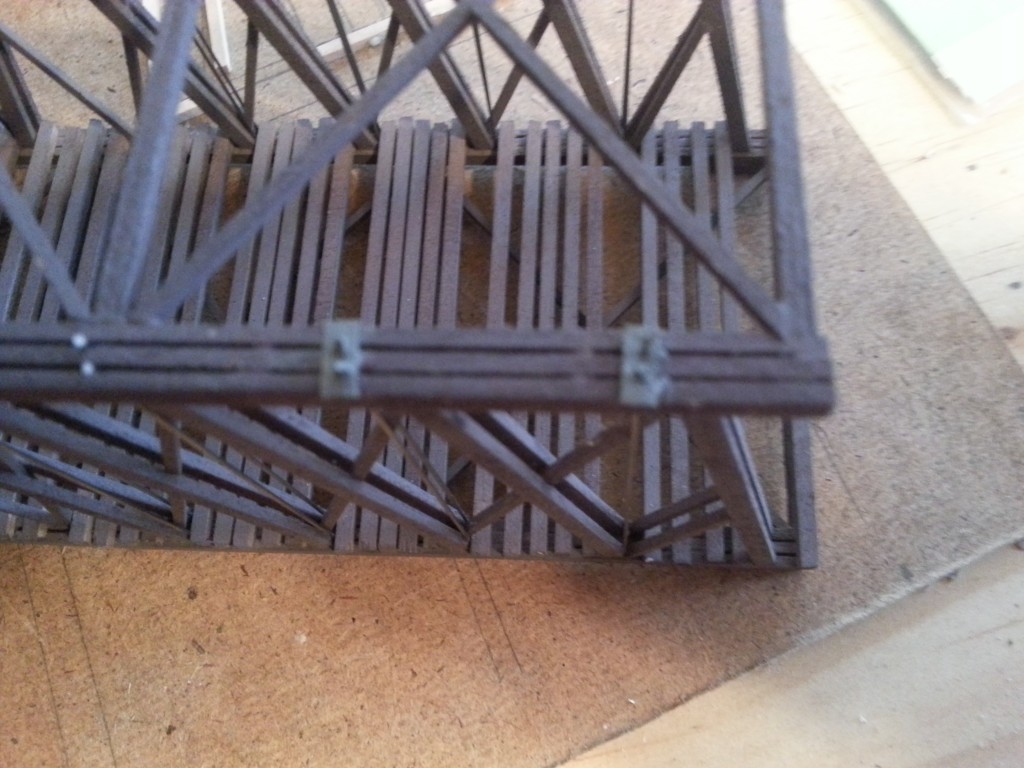
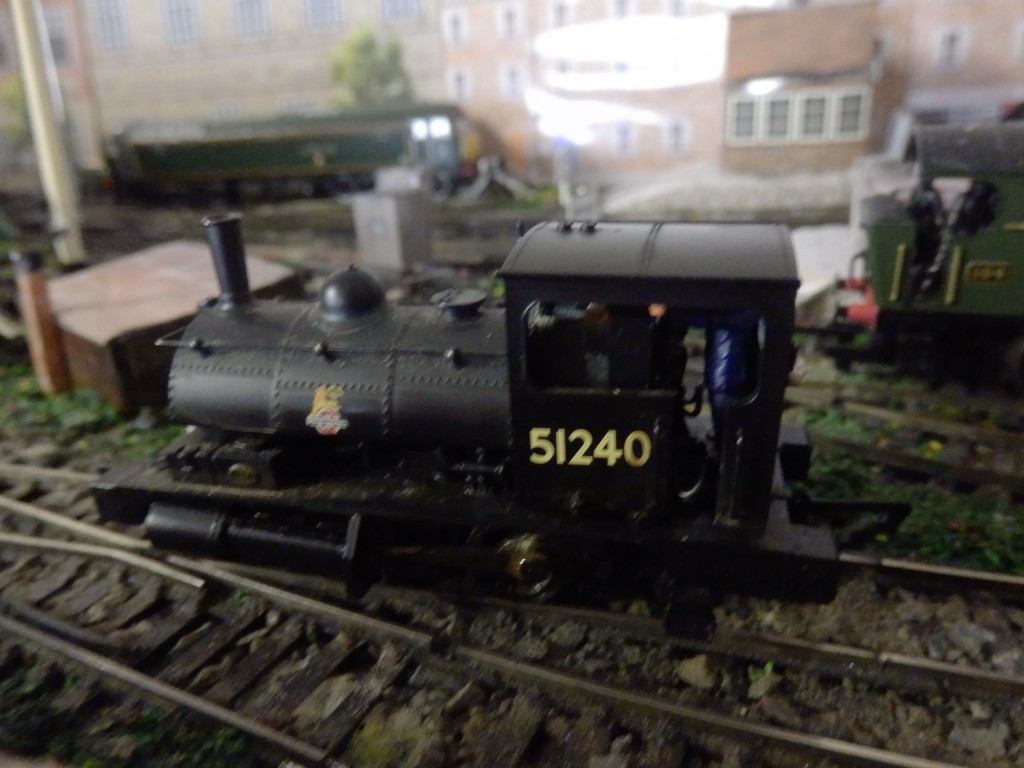
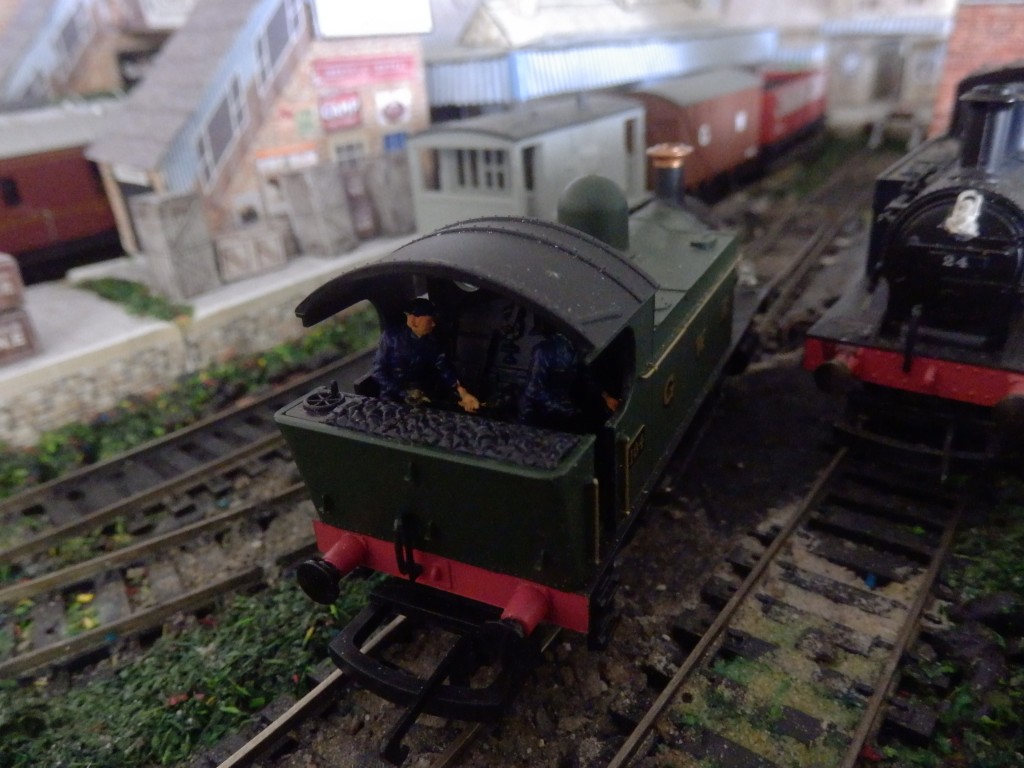
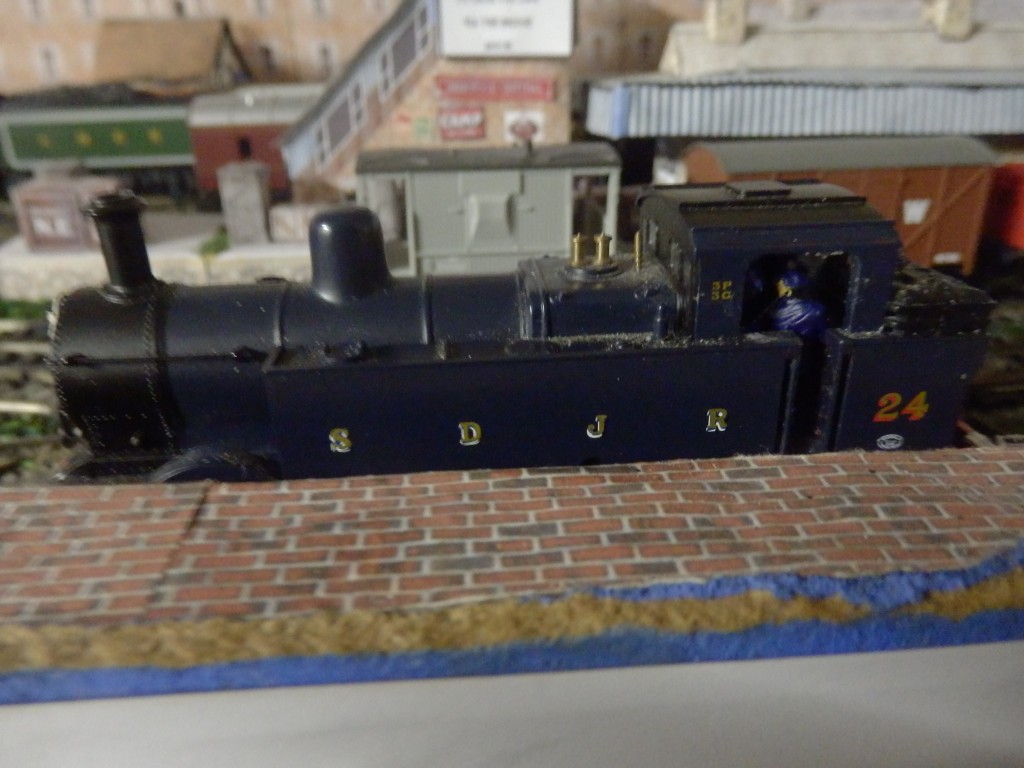
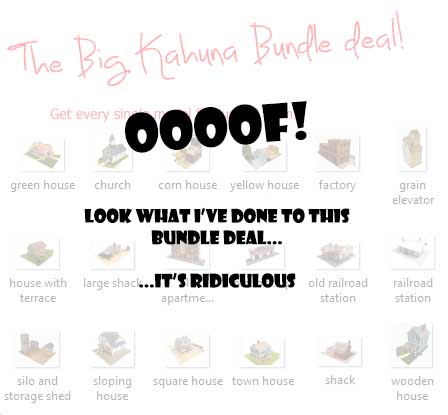

Question for Robert
Hi Robert I really like your idea for the lighting, but would it be possible to show us some more details of your brass pick up plates and how they are fixed and contact the power source.
I am very interested in trying this for Carriage lighting etc.
Thanks
Roadrooster that look’s super nice. Great job. I also did up a steam loco with rust. My rust is deep rust . Caused by constant humidity in a swamp. I have sat the loco aside till I finish my shed and then add it to my swamp diorama. great work you two. Love to see more photo’s please.
Hi a most impressive result, but what is fact sand ? Is it used for fracking or is it the sand used to give better grip ob skippy rails. If its the latter it confirms what we already know. Fract really is stranger than friction !!
NEIL
So do I hear tortured groans from the stalls !!
One beautiful job! I wish I had your talents. Thanks for the great pictures!
Dave
Wow! That gondola is the best ageing/weathering job I have ever seen.
very cool info about the led lighting
and the gondola is sooo real looking….
keep it runnin guys….
Hello Mark,
Shot taken with upside down iPhone is excellent. Thanks for the awesome tip.
Ash
Weathering job is superb. I still have to try my first weathering.
Ash
I had a layout of sorts in my late teens but marriage put an end to it, my kids brought me a NOCH plastic layout for my 60th and I plan to use this as a center piece for my new layout. Only trouble is over the last 5 years or so I have been gathering N guage bits and piecse and the layout is HO. Oh well might sell the N stuff…
The detailing on the car is excellent, I have seen so many people who can do this type of custom adaption it makes the store brought stuff pale in comparison.
Would it be possible to have photos of the wiring set up for the carriages and loco? the old saying A picture is worth a thousand words.
Superb weathering making the gondola look like it has been truly used and abused, similar to steelworks environment.
Moving on to Robert’s letter about lighting.
Keep up the good work
I’m going to be honest with you about the weathering of the gon . 1. Good job. 2 Over done . 3 this would look best in the scrap yard . 4 no rail line would send this car to a customer for loading . nor would they run it in a train. If you had it in the local scrap yard just to use on the private property it would be great. But as a main line car N0- I once had a box car that was in the car and was heat warped while the car was closed in a parking lot . It looked really neat with some applied chalk weathering. But main line service , No, .
Very well done! Looks great!
the how to is great nice work. the photos look really good. great work on the lighting i always stuff it up with the resistor side of things.
Would love to see Mark’s West Texas Layout.
Hello Robert, the bright white LED isn’t too bright for the 1950’s locomotives?
I personally would never ruin or what you all call weathering ,it destroys the value and looks ugly.
A few short observations…
Locomotive lighting. — One would be shocked to know how bright those old incandescent headlights in steam locomotives really were. That parabolic reflector really pushed the light out there. The modeling challenge would be the yellow shift because the light from incandescent bulbs is not a pure white. Worse, LED light tends to have a blue shift to it.
For a first effort, the weathering on the gondola is well done. The observation here is that it is overdone. A car in that condition would most likely be in a scrapyard. I speak from experience, my first efforts were overdone as well. My suggestion is to be a bit more subtle. Instead of a candle to heat the plastic, see if you can find an old incandescent bulb — And old c9 Christmas bulb is perfect! A soldering iron on a lower wattage (use a dimmer switch) is also good. The problem with the candle is that it gives off too much heat.
Here in the U.S. one can purchase sand from the local hardware store. There are two different sands available for purchase. The kind used in kids sand boxes is finer than the sand available for concrete mix. Hope this helps, Jim
Are you sure its the weathering only crew that got at those old trucks and not the wrecking crew too?
OK. Here are my thoughts: (1) Roadrooster, that’s a good first try at extreme weathering. I agree the damage to the gondola is a bit overdone. I would recommend adding some patches where damaged sections were repaired (just some bits of paper or thin styrene glued over a small area. You could even simulate some rivet heads or welds holding them in place.) Also, I’d try using a bit more variety of colors to simulate rust and grime build-up over years of hard use. Some art store chalks in burnt umber, ocher, gray, etc. brushed on in appropriate places would add a little more dimension to the model.
(2) Mark, that’s a great night time photo. I especially liked the reflection of the lights in the engine shed off some puddles of water in the foreground. Thanks for the tip on how to use smart phone cameras.
(3) Robert, NIce explanation of how to add/replace locomotive and coach lights with brighter LEDs. Some photographs of your technique would help a lot to make it more clear. Like how you attach the brass wipers to the loco shell, etc.
That is one beat up gondola. It looks legit!
I used 6 volt bulbs in my N-gage locos with great success. And, no, they never burnt out.
Fastjeff
Nice weathering. Something often missing on model RRs.
To Brian D, n scale could be used on HO layout in further away background buildings, etc for distance as in mountain areas, meadows.. enjoy
the effect that you had was really close to some of the coal cars ive seen on the tracks around where i live.
All good stuff. Weathering is a good thing if you want realism on your layout. There are many techniques and degrees of weathering and you will need to find a method that works for you. Some rail cars are old and beat up, some not so much. Sometimes the era that you model on your layout can help with how much weathering you need. It’s a personal choice but it surely beats shiny plastic.
Jim aZ
reminds of old, beat-up gons on property of NW Steel & Wire where many locos & frt cars are dismantled & melted!
Great job Bobby Reminds me of older bridge designs, not a bad thing just keeps things interesting!